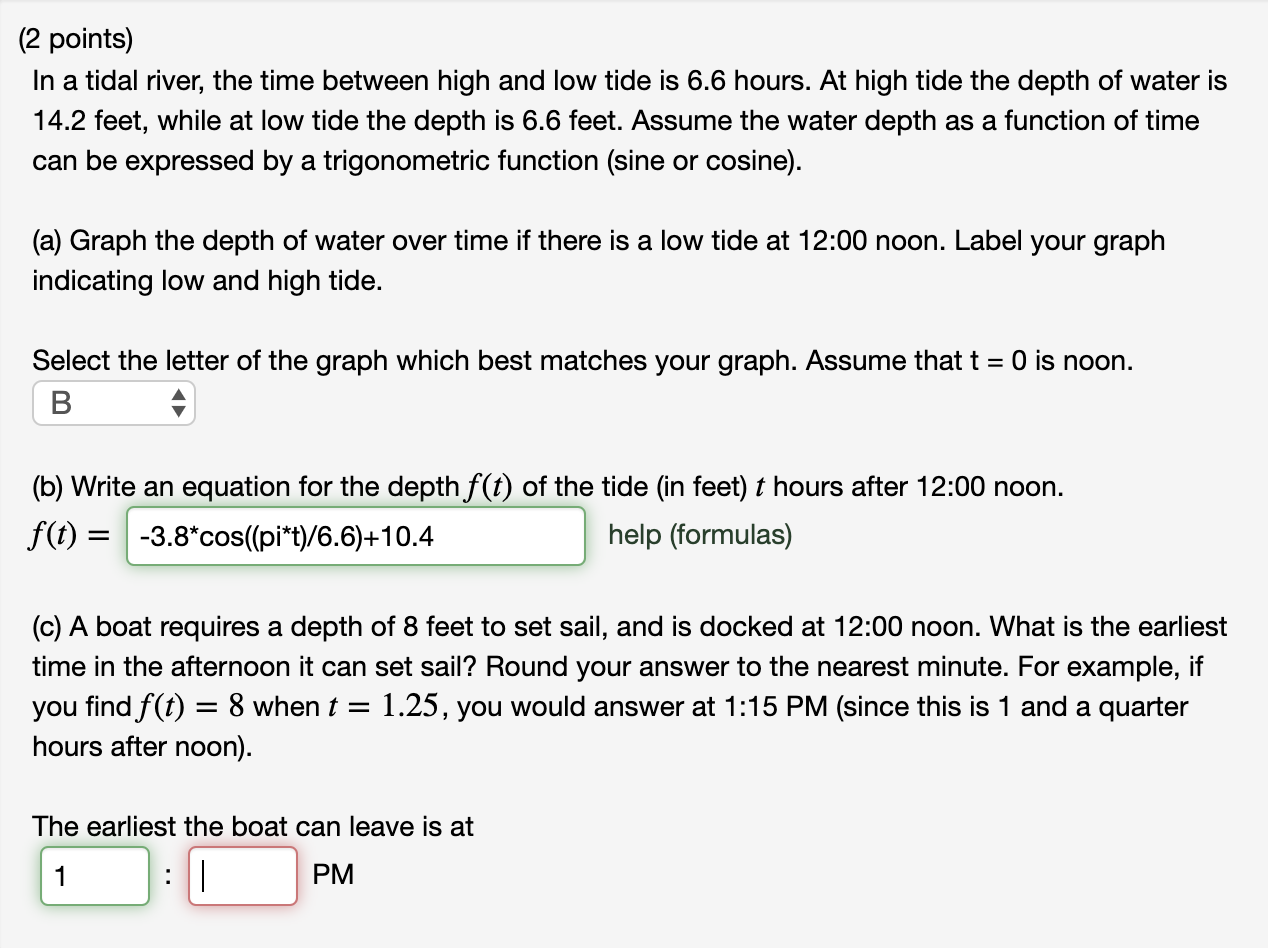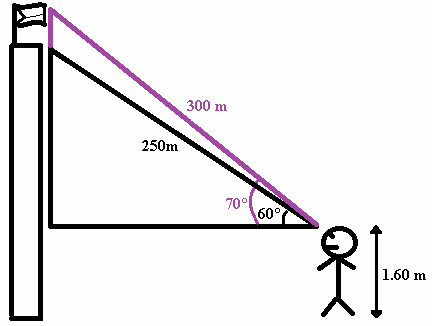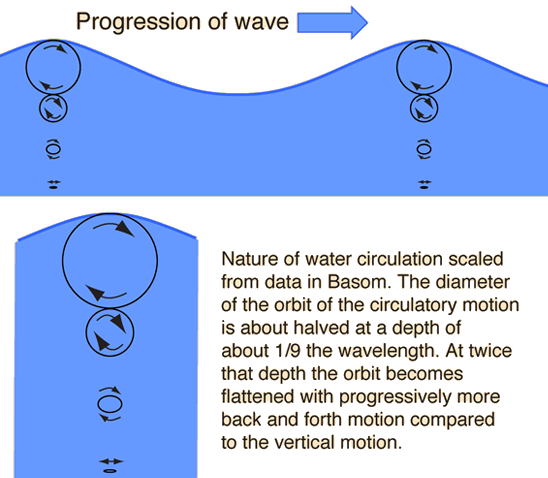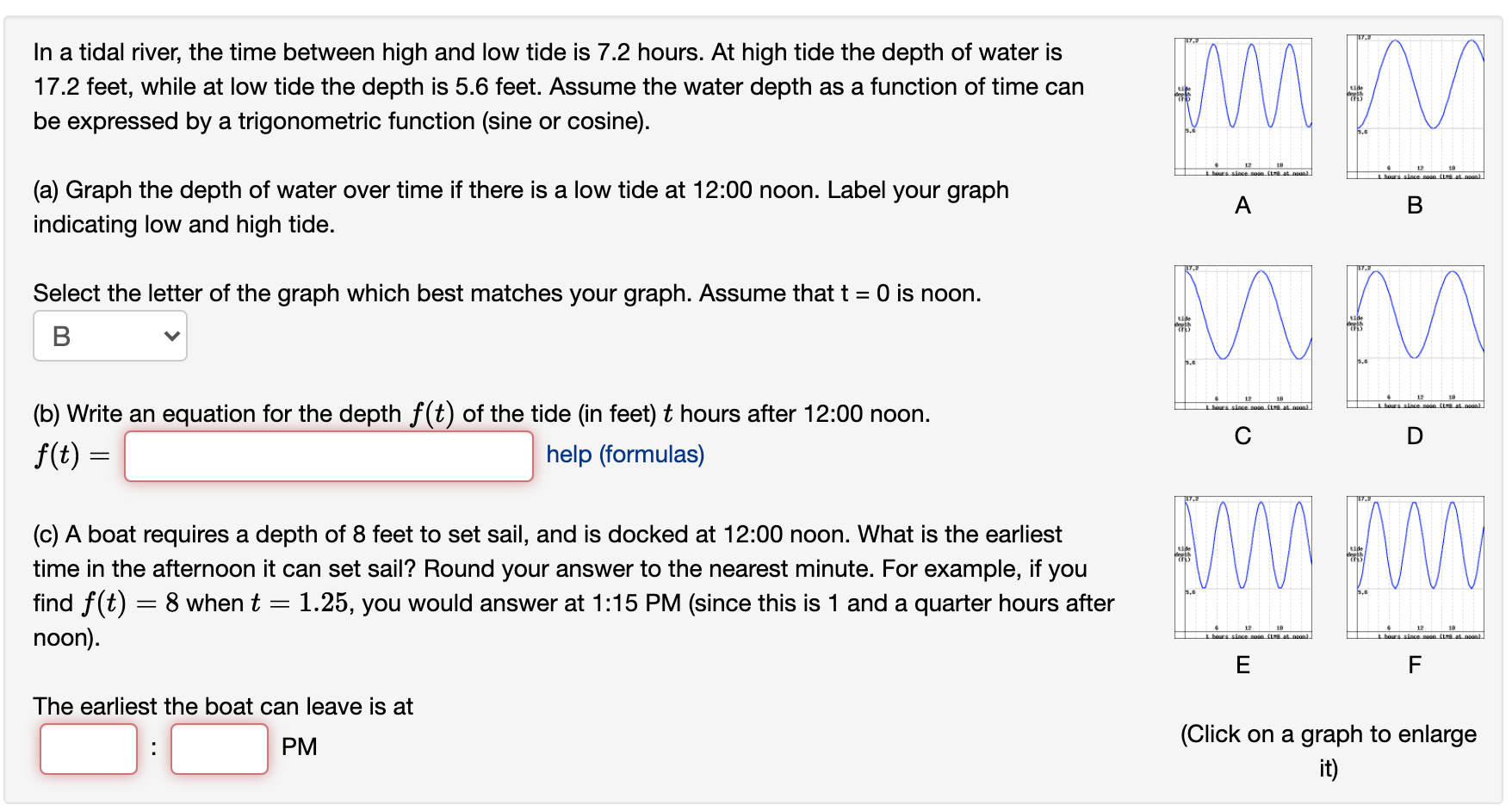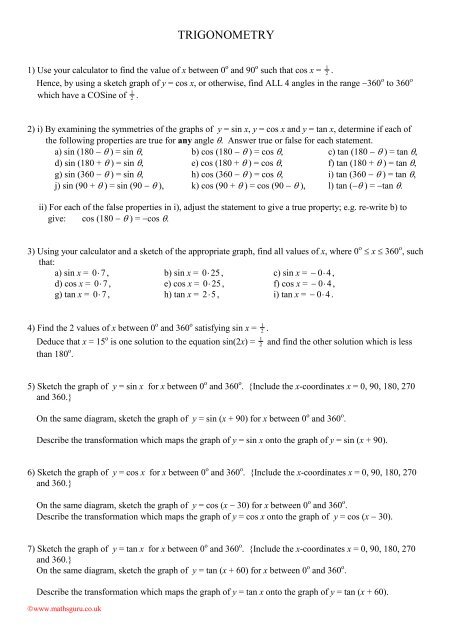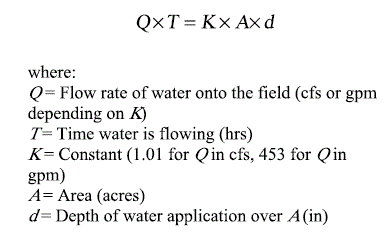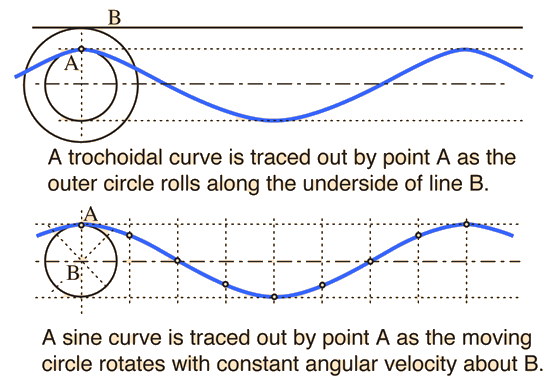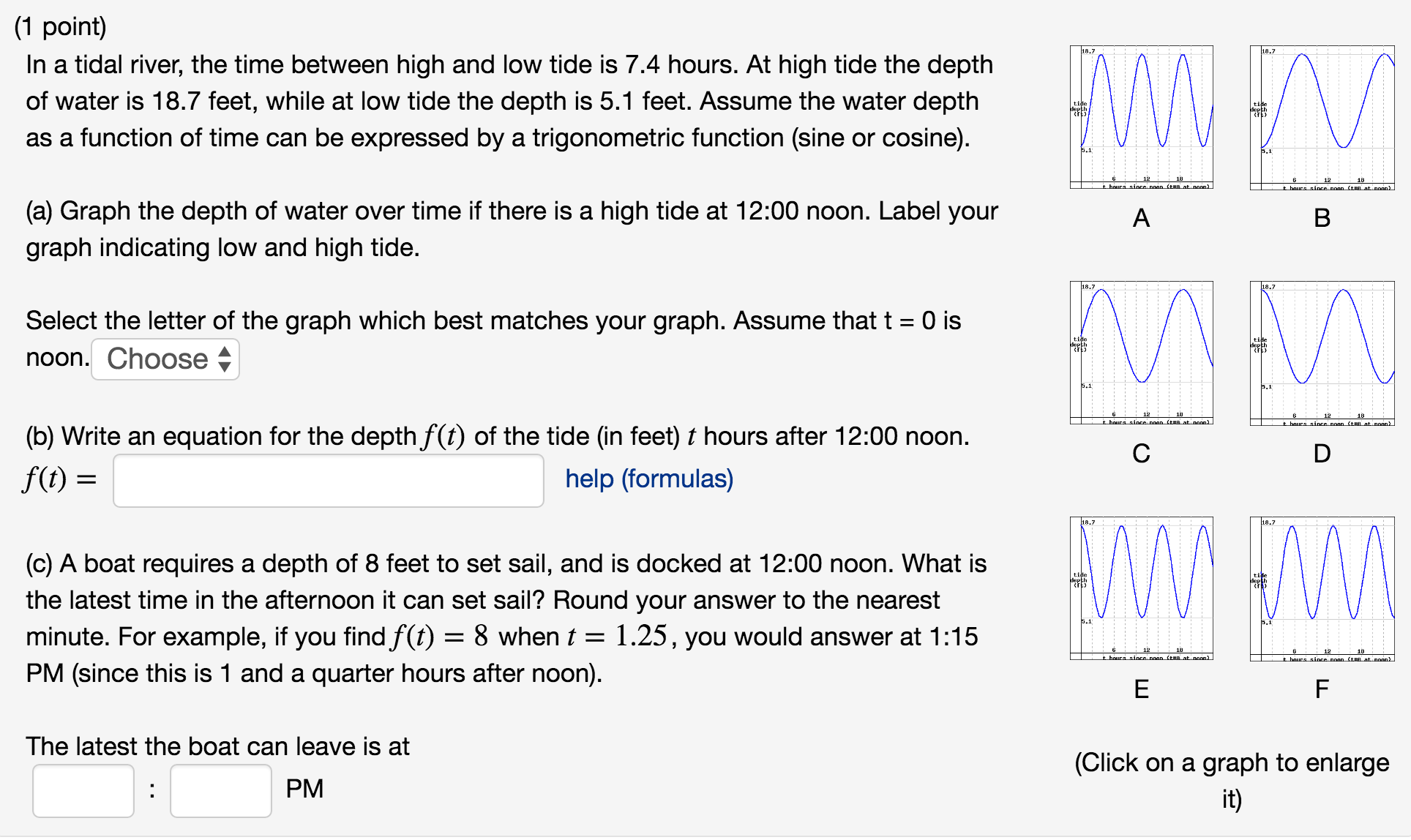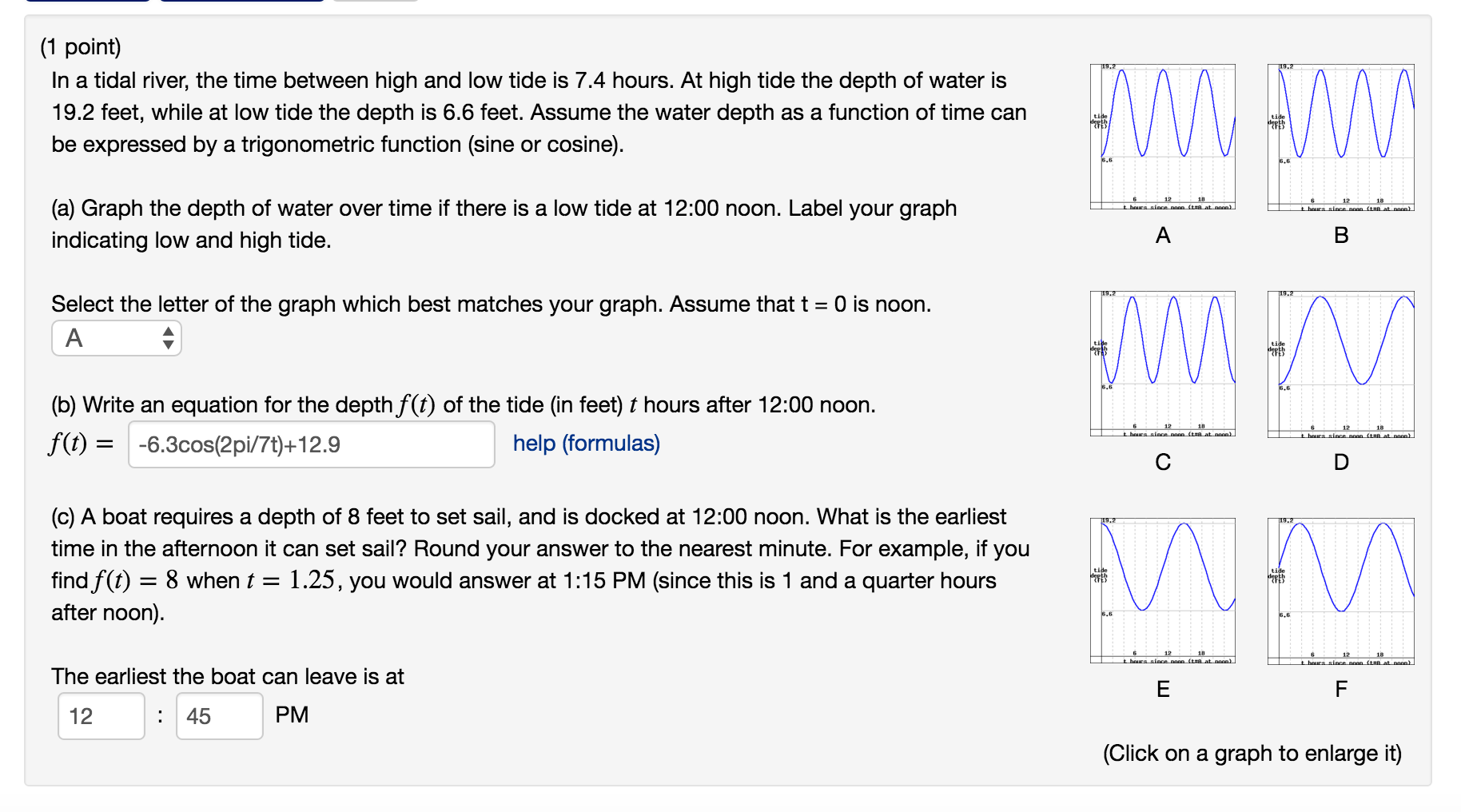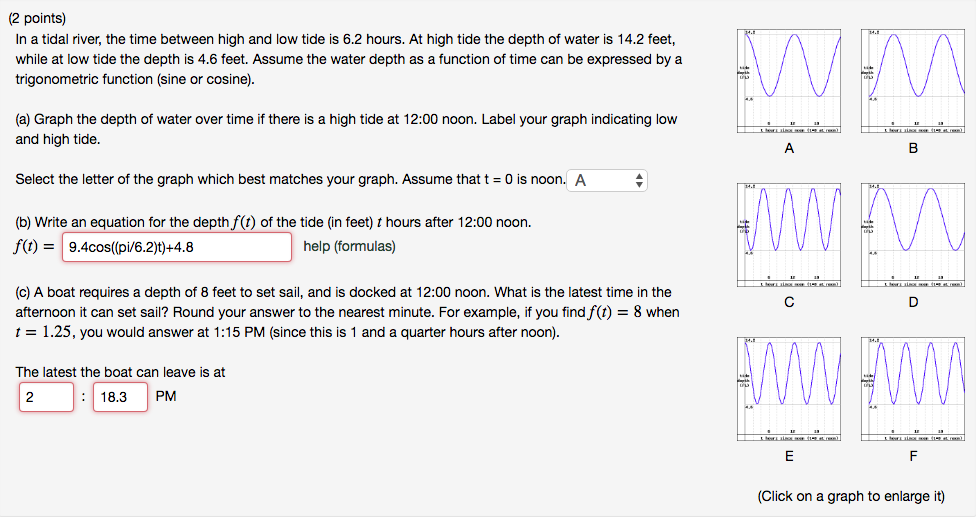
SOLVED: The water depth in a harbour is 21 m at high tide and 11 m at low tide. One cycle is completed approximately every 12 h. a) Find an equation for
SOLUTION: The tide, or depth of the ocean near the shore, changes throughout the day. The depth of the Bay of Fundy can be modeled by d=35-28cos(pi/6.2)t, where d is the depth
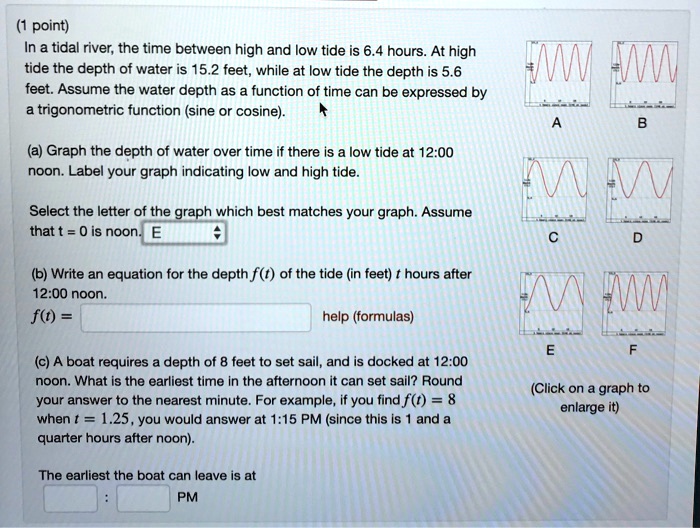
SOLVED: point) In a tidal river; the time between high and low tide s 6.4 hours. At high tide the depth of water is 15.2 feet; while at low tide the depth
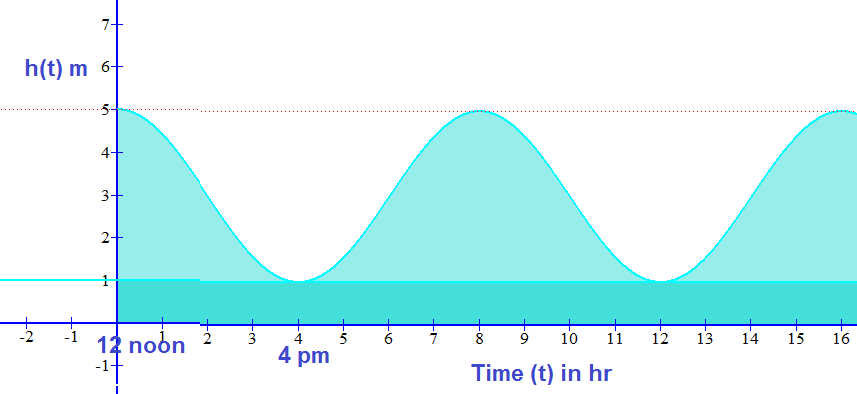
Use a sine function to describe the height of the tides of the ocean if high tide raises the water level to 5 metres at noon and low tide drops it down

SOLVED: Remaining time: 567:14 (min:sec) Problem 7 PREVIEW ONLY ANSWERS NOT RECORDED point) tidal river; the tirne between high and low tide is 5.8 hours. At high tide the depth of water

